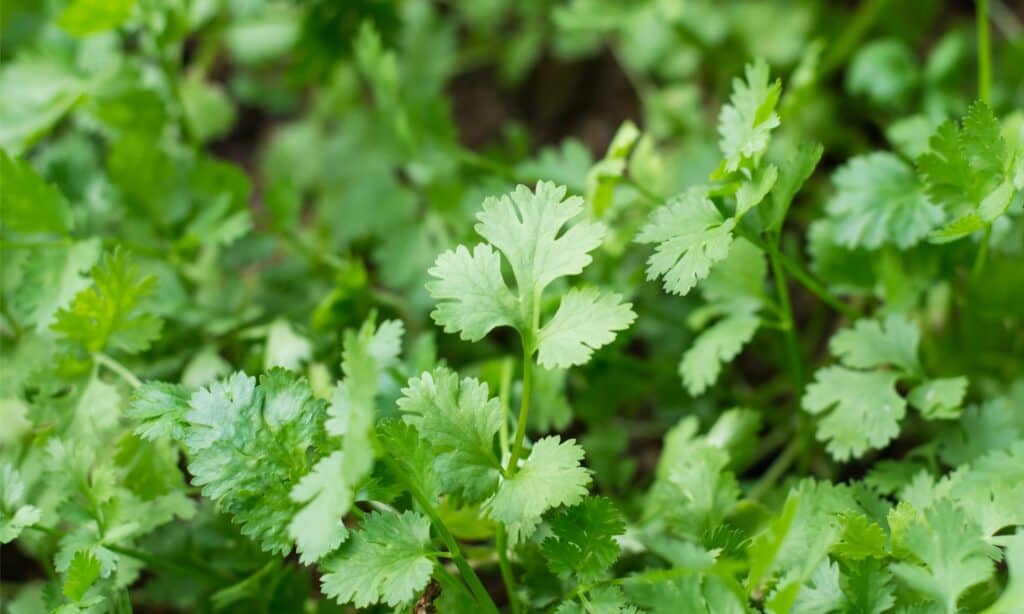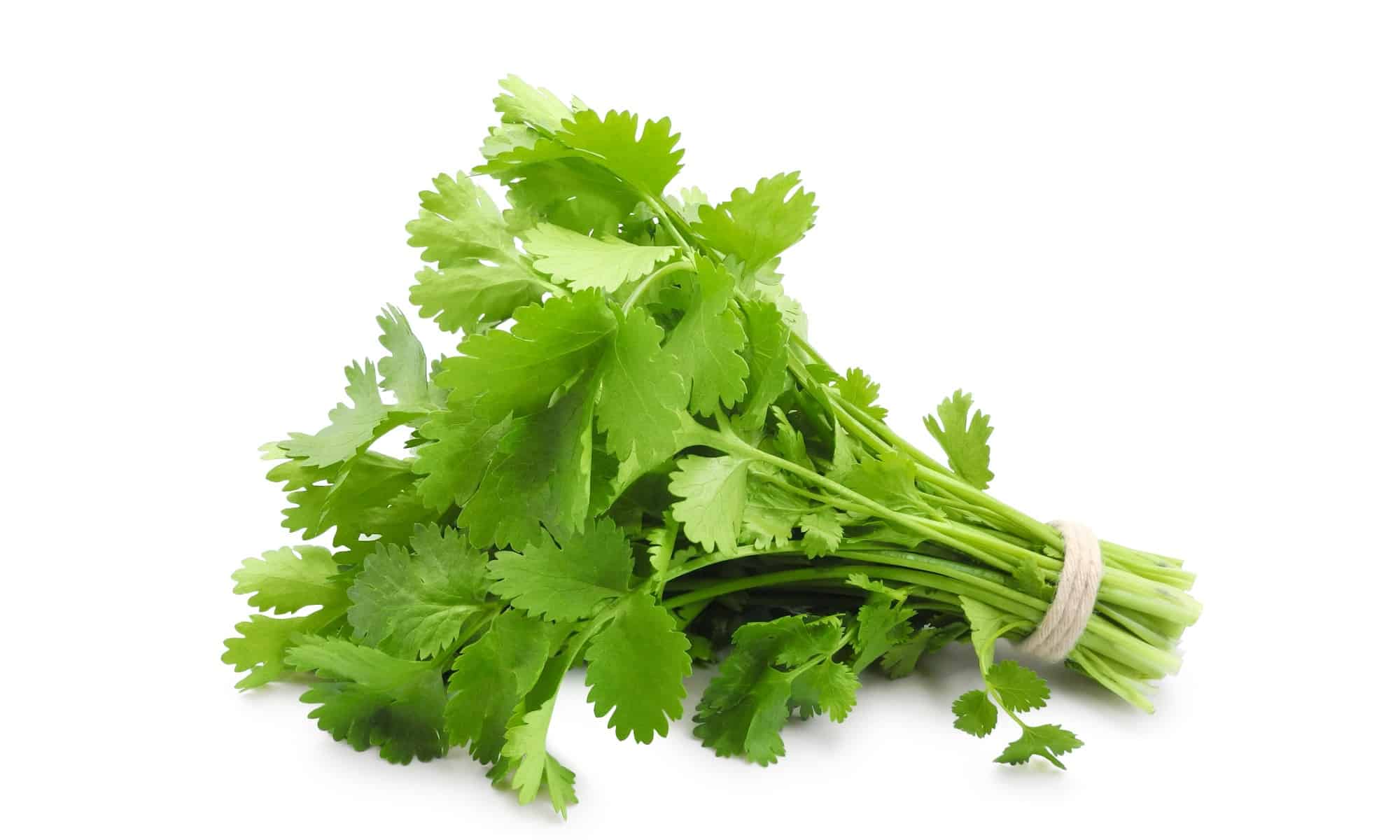Cilantro is a staple in most kitchens. This flavorful and fragrant herb is also small and easy to store. It’s also just as easy to grow! Cilantro isn’t a picky plant and can thrive in many conditions, including indoors. It’s also an excellent plant when using a hydroponics system. Are you ready to minimize your shopping and grow your fresh cilantro? Follow along for a step to step guide on how to grow cilantro indoors.
What is Cilantro?
It’s a good idea to know more about cilantro before growing it. Cilantro, also called coriander, is an herb and a member of the family Apiaceae. Cilantro is an old plant with a confusing origin. However, experts theorize that it likely originated from Israel and Portugal. Cilantro accessions have been found in texts, paintings, and pottery thousands of years old. While scientists don’t think this plant is native to Egypt, the ancient Egyptians may have been cultivating it as the Ebers Papyrus mentions it, a piece of text from 1550 BC.
This annual herb is entirely edible, but most people use the leaves in cooking. The leaves have many names. In the United States, they are called cilantro, however, in other parts of the world, the leaves are named Chinese parsley and fresh coriander. This delicious and vibrant leaf can be eaten raw and cooked. It’s used in salads, sauces, and meat dishes all over the world. The leaves though spoil quickly.
The seeds are also edible and have been used as a spice in cooking for thousands of years. Sometimes coriander refers to the dried seeds, not the leaves or the entire plant. The seeds are nutty and slightly acidic with an orange flavor. This is an important ingredient in many Indian curries.
Cilantro is very nutritious. It has less than 1% fat. Cilantro has high amounts of Vitamin K, Vitamin C, and Vitamin A. Interestingly, not everyone tastes cilantro the same. Some people are born with a gene that influences the flavor of cilantro. Instead of tasting the freshness of the herb, it’s soapy.

Cilantro is an annual herb in the Apiaceae family.
©iStock.com/Tevarak
Can You Grow Cilantro Indoors?
Cilantro is a versatile plant. You can grow it indoors and outdoors. You don’t even need dirt! The hardest part is strengthening your cilantro plants so they aren’t ‘leggy’, but stronger light and air circulation can help. Cilantro also thrives in hydroponics systems. You can build your system or purchase a mini kit. Many of these kits are designed for herbs and dwarf vegetable plants, meaning you can grow just about anything in a small space. There are many ways to grow cilantro indoors. In this article, we are going to focus on growing cilantro in a container indoors, either using grow lights or a bright window.
How to Grow Cilantro Indoors
Cilantro isn’t a very fussy plant. It thrives as long as it has enough light, warmth, and water. Too much water though can cause problems. Cilantro plants are commonly grown indoors as microgreens. However, you can grow large cilantro plants and snip the leaves as needed! Keep reading for a 5 step guide on how to grow cilantro indoors.

Cilantro microgreens are commonly grown indoors.
©Valeriia Duggan/Shutterstock.com
Step 1: Germinate the Seeds
Technically, you don’t have to germinate the seeds before planting them in the dirt. However, germinating seeds can speed up the process, especially since not all seeds are ‘good’. Cilantro seeds are easy to germinate, but not all seeds are the same. When the seeds are too old, they won’t root. Always look at your seed package before purchasing or planting.
To germinate seeds, choose a handful of seeds and place them in a wet paper towel. Fold the paper towel so the seeds remain wet. Place the paper towel in a plastic Ziploc bag and keep it closed. Some people recommend placing the bag with the seeds in a dark room or taping the bag to a window. Either one works! You also don’t have to use a ziplock bag. You can also put the seeds away in a closed box. The methods work as long as the temperature is 65–70°F. Any colder and the seeds may remain dormant. In just three to five days, you should start to see the seeds expanding and developing white-yellow roots.
Step 2: Plant the Seeds
The next step is to plant the seeds in the soil. First, find a container that is well-draining and small. The material of the container doesn’t matter. You can even recycle old water jugs as long as you add drainage holes at the bottom. In the well-draining container, fill it with vegetable soil. Don’t pack the soil too tightly, instead keep it naturally loose. The newly formed roots need to root but also need to breathe.
Spread the seeds on the soil in the container and add another light layer of soil. Try not to plant the seeds deeper than 3 inches. They only need to be planted about half an inch into the soil. You also don’t have to worry about spacing the seeds out as you can thin the plants as they grow.
Step 3: Choose a Spot with Good Lighting
Step 3 is to choose a spot with good lighting. Cilantro plants need full sun for at least four hours every day. When planting these lovely plants outdoors, they thrive in spring and fall. However, too much light can also damage your cilantro or cause it to bolt, flower, and seed. Find a window that receives bright direct light. It’s unlikely your window will receive so much light it causes the plant to go to seed. Not all homes have enough light though or bright windows. You can also keep the cilantro plant in your kitchen and use a grow light. If you use supplemental lighting, keep space between the light and the plant as the light can burn the leaves and cause yellowing.
Step 4: Water and Thin
The next step can be two separate steps. You’ll need to water your indoor cilantro plant. Since the plant is indoors, you need less water. Only water your cilantro plant when the soil is starting to dry out. It needs about an inch of water every week. You can space this out by watering once every three to four days.
Cilantro plants grow quickly! In just a few weeks you should see multiple leaves appear. This is the time to thin your plants. Pluck or cut out the weak cilantro plants. These are the plants that are leaving or not developing the second set of leaves.
Step 5: Harvest
The last step is possibly the best, harvesting. You don’t need to wait for cilantro to grow to a certain length. Even cilantro microgreens are packed with flavor, fragrance, and nutrients. While you can pull your cilantro plants out of the soil, you can also keep the plant alive longer by harvesting the leaves frequently. Instead of pulling and destroying the roots, use scissors to snip the outer leaves. Keep about an inch of the stems.
Common Cilantro Growing Problems
Generally, cilantro plants are sturdy. Still, they can develop diseases and attract pests. One of the most common cilantro problems is water root, which is entirely preventable. Cilantro plants need a lot of water to grow, but too much water can trap at the bottom, causing the roots to drown. This leads to gnats and aphids, attracted by the moist environment. To prevent this, use a container with plenty of drainage and water the plant in small amounts.
Fungal wilt and mildew can also develop in cilantro plants. This is especially common when there isn’t enough air circulation. When growing indoors, try to keep your cilantro plant in an open space. You can also use a small plug-in fan for ventilation.
Thank you for reading! Have some feedback for us? Contact the AZ Animals editorial team.








